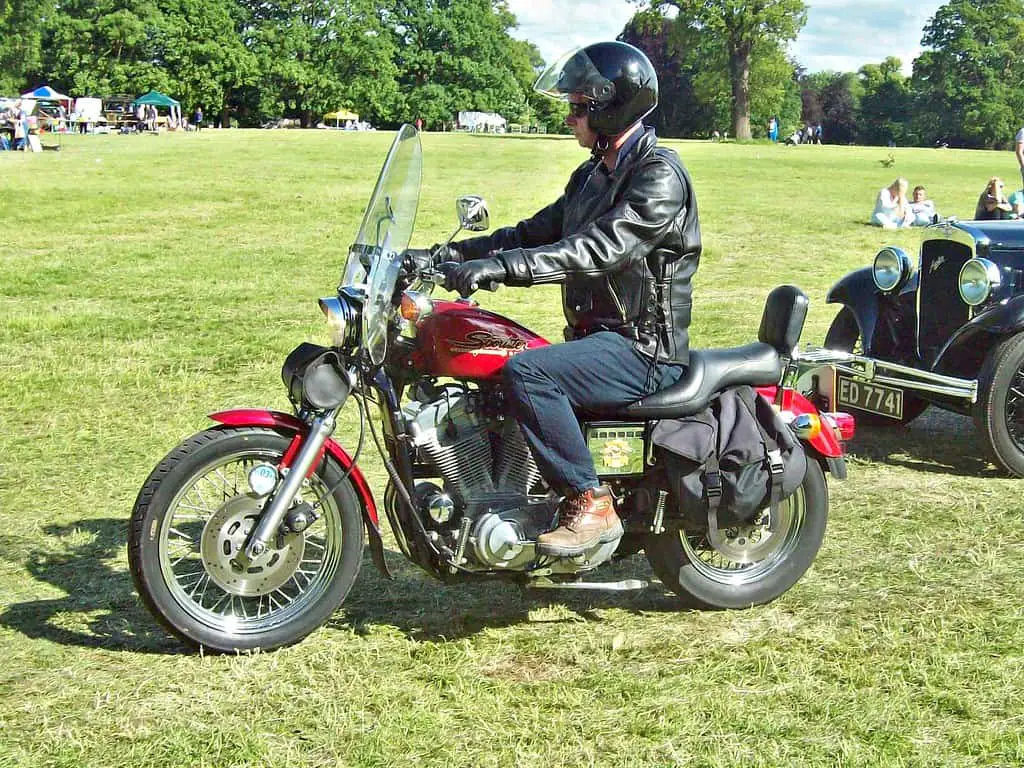If you live in the United States, getting your motorcycle license is easy. Every state has its unique rules and regulations when getting a motorcycle license. All the states, however, accept each other’s licenses.
Here are the main steps to getting your motorcycle’s license:
- Pass the written test
- Go for real-world practice
- Take the skills test
This article explores all the steps you should take to acquire your motorcycle license. Keep reading for more information on these steps and other safety concerns involved.
Steps You Should Take To Acquire a Motorcycle License
Getting a license will be a walk in the park if you know all the processes involved. First, you should make sure you meet the age limitations specified by your state and provide proof of age. Then, you can proceed to take your license. There are three significant steps involved:
1. Pass the Written Test
All bikers in all states must take a written test before getting on a motorcycle. After this test, you’ll obtain the motorcycle learner’s permit.
The learner will have to answer questions concerning basic motorcycle terms, laws, and techniques in the written test.
Some states will allow you to take the test online, while others will require you to visit the department of motor vehicles for the exam.
If you want to perform well in the written test, ensure you study numerous resources concerning motorcycles in your local DMV.
2. Go for Real-World Practice
After passing the written test, you can get your motorcycle riding permit for a limited time period. When a rider receives their permit, they’ll have to practice riding on a motorcycle. For the riders who are not yet 18 years, some states will demand the rider to practice for several hours under supervision.
You could use state-approved safety courses or take classes with licensed riding schools.
When learning how to ride a motorcycle, your supervisor can’t watch you from the passenger seat. That’s why most states ask the new rider to get supervision from other motorcycle users. The person supervising should observe from a certain distance.
When you’re still learning how to ride the motorcycle, you’ll have several limitations concerning when and how you ride. Here are some of the standard regulations for people with motorcycle permits:
- No passengers should be on the motorcycle
- Only daylight practice is allowed
- 0% BAC level
- The rider should be under supervision by a licensed motorcyclist
The rules concerning new riders’ training vary in each state. It’s paramount to check with the local DMV to understand the regulations for practicing your riding skills.
Ensure that you have a motorcycle insurance cover for the motorcycle you’re using.
3. Take the Skills Test
The road skills test is the final stage when acquiring a motorcycle license. As discussed earlier, the examiner won’t take the passenger seat. The format used to test your skills on the road will differ from the regular driving test.
The examiner will start by observing your knowledge of driving a motorcycle on the closed course. The biker should demonstrate their skills in accelerating, brakes, and controlled turns.

Time and Cost Involved When Getting a Motorcycle License
Everyone wants to get their license fast and move on with their lives. However, the amount of money and time spent on this activity depends on your grades after the test. The process you have used to acquire the license will also determine the time you use it.
The motorcycle license will be out in just one week for adult riders who complete their state training course fast.
If the rider opts to learn on their own, the process of getting the motorcycle license will be longer. The rider will need to practice for several weeks or days while getting instructions from an experienced professional.
Most states don’t require adult riders to carry their permits when training. The minors who are preparing to get their license should meet all the set minimum limits. In California, for instance, motorcyclists under the age of 21 should have learner permits for more than six months before they can proceed to get the road test.
Why Young Riders Need More Processes To Get A License
Young riders who haven’t yet attained the age of 21 (or 18 in some states) need to take more processes before acquiring their motorcycle license.
Apart from having the permit for a longer time, these young people will take a motorcycle skills class. The class is always optional for adult riders.
Things To Keep in Mind When Practicing To Get a Motorcycle License
Protect Yourself
When purchasing your bike, buy protective gear. Don’t start practicing without the gear. The gear includes a helmet that snugly fits your head without being too loose or tight. You also need to wear motorcycle boots that cover your ankles and fit your feet firmly. Gloves, pants, and jackets are also some protective clothes that you must wear while riding a motorbike.
Practice
During the weekends, start your practice early in the morning when the roads aren’t busy. Without too many people on the road, you’ll concentrate on getting the best skills rather than focus on the cars.
You can ride with a close friend who’s already experienced and has your safety in their mind.
Expect the Unexpected
While riding on the roads, you might get a flat tire anytime. Anything can happen on the road, including running out of gas.
When unexpected things take place, always remain calm. Wave one of your hands to tell other motorists that you have a problem. Someone will pull over to assist you.
Get the Ideal First Bike
If you want to pass all the tests in motorcycle training, you must have the right bike. For first-time riders, it’s crucial to have 500cc bikes or under. After learning and getting your license, you can get the fancy motorcycle you have been dreaming about.
Summary
Getting a motorcycle license is very easy for United States citizens. As long as you pass all the required tests and follow all the regulations, you’ll have your license in a few days. Read about the motorcycle regulations in your state before taking the tests for the best grades.
